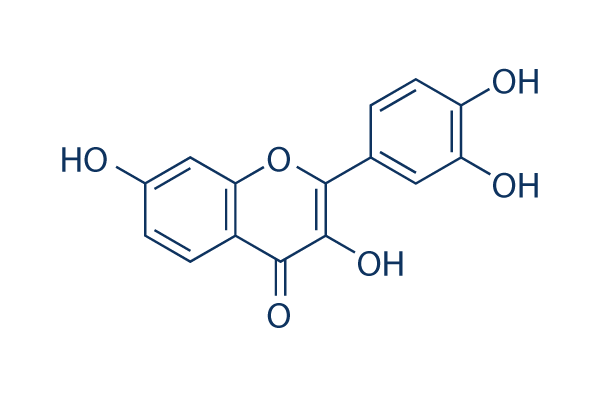Formula C15H10O6 Melting point 330 °C | Molar mass 286.2363 g/mol | |
 | ||
Fisetin (3, 7, 3′, 4′-tetrahydroxyflavone) is a flavonol, a structurally distinct chemical substance that belongs to the flavonoid group of polyphenols. It can be found in many plants, where it serves as a colouring agent. It is also found in many fruits and vegetables, such as strawberries, apples, persimmons, onions and cucumbers. Its chemical formula was first described by Austrian chemist Josef Herzig in 1891.
The biological activity of fisetin has been studied in many laboratory assays; like other polyphenols it has many activities.
Research
Fisetin, like other polyphenols such as resveratrol, is a sirtuin-activating compound and has been shown in laboratory studies to extend the life of simple organisms like yeast, worms, and flies. Like the other compounds, it has also been shown to be reactive in many different assays of biological activities, raising the possibility that any drug generated from fisetin would have too many side effects to be useful.
Fisetin has shown anti-cancer activity in studies on cells and model animals conducted in laboratories, and appears to block the PI3K/AKT/mTOR pathway. In lab studies it also has been shown to be an anti-proliferative agent, interfering with the cell cycle in several ways. Fisetin, like some other flavonoids, has been found in lab studies to be a topoisomerase inhibitor, which may turn out to be a carcinogenic activity or an anti-cancer activity - further research is needed.
In studies conducted on cells in a laboratory, fisetin inhibits the activity of several pro-inflammatory cytokines, including tumor necrosis factor alpha, interleukin 6, and Nuclear factor kappa B. It has also has been shown in lab studies to upregulate glutathione, an endogenous antioxidant. Fisetin also has direct activity as a reducing agent, chemically reacting with reactive oxygen species to neutralize them. Based on lab studies, it appears that fisetin lodges in cell membranes and prevents oxidative damage to lipids in the cell membrane. Fisetin, like other flavonoids, has a planar structure, with multiple carbon rings. Fisetin is able to scavenge free radicals as a result of its electron donating capacity, which is due to the presence of two hydroxyl groups on one ring and a hydroxyl group on another ring.
